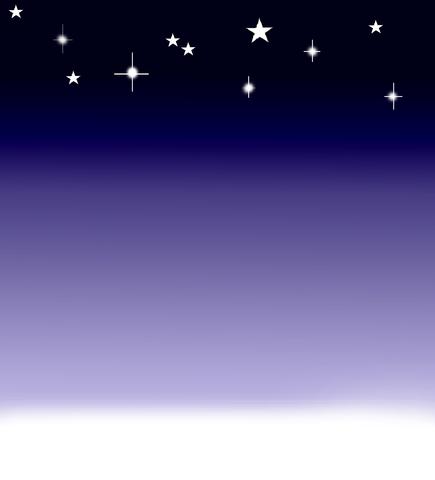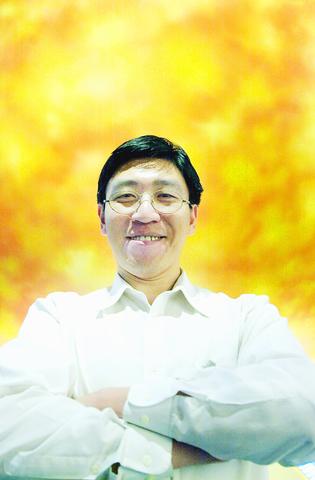At roughly 12:30am on Monday, Earth will begin its annual orbit through a cosmic minefield laden with particles of dust, that are, needless to say, sizably larger than those found behind the sofa.
Known as the Leonids meteoroid stream and named after Leo, the constellation from whence the meteors appear, the stream is caused when huge particles of space dust that are whipped up and spewed out by Comet Temple-Tuttle burn up on entering Earth's atmosphere.
Although there are on average 50 meteor showers visible to the naked eye every year, the Leonids stream is the most spectacular and can sometimes discharge more than 10,000 meteors per hour into the atmosphere.

Even when the stream is little more than a minor shower, as is quite often the case, the meteoroid stream remains one of the most prominent of such streams visible from Earth.
This year's stream is set to be somewhat different from recent Leonids, however. Astronomers the world over are expecting the biggest and brightest shower since 1988, when the Comet Temple-Tuttle traveled through the inner solar system and laid down a fresh trail of dust particles.
Because Earth will be passing directly through the center of the dust stream this year the rate at which the shooting stars will appear in the sky will be greater than normal. While last year's stream saw an average of 100 meteors per hour exploding on entering the atmosphere, this year sky-watchers anticipate a huge increase in the number of cosmic dust explosions.

PHOTO: CHEN CHENG-CHANG, TAIPEI TIMES
"Last year's stream was very disappointing because of the position of Earth in relation to the stream," recalls Taipei Astronomical Museum's Astro Wu (
Not only is Leonid's shower one of the brightest and largest meteor showers to light up the night sky, it was also one of the first such cosmic happenings to bear mention in historical Chinese texts. In 687 BC, while compiling the Spring and Autumn Annals (
"In Egypt during the latter half of the night until the morning of Wednesday, 9 Dhu al-Qa'da (Oct. 26 in the modern calendar)," wrote the historian, "the stars were very disturbed. ... No one was able to gaze at the heavens because of the numerous ... shooting stars."
Of course, at that juncture in time a vast majority of those witnessing the Leonids believed it to be an omen hailing the end of the world rather than a cosmic phenomenon. It wasn't until 1833 that it was scientifically proven that the Leonids stream was not God's rage but, instead, a scientifically explainable marvel.
"Up until as recently as the late 1900s people across the globe thought that the stream signified the end of the world or that the bright lights were caused by something known as `electrified air,'" explains Chen Cheng-peng (陳正鵬), head of the Taipei Amateur Astronomers Association (臺北市天文協會).
After the 1833 Leonids stream lit up the night sky for a record four hours, Yale-based mathematician, Denison Olmsted began searching for the coordinates from which the meteors had radiated. In his findings released the following year, Olmsted concluded that the meteors originated from a cloud of particles in space centering on the constellation Leo. While he couldn't hope to explain the nature of this cloud properly, Olmsted's rudimentary ideas did pave the way for more serious studies of meteor showers and eventually the birth of what is now known as "meteor astronomy."
There are now millions of meteor astronomers, both amateur and professional, who will be awaiting the Leonids with baited-breath this coming weekend. Not all of them, however, will get to witness this year's meteor shower.
According to Wu, light-pollution will greatly hinder sightings in much of Europe, The Americas and densely populated parts of Asia.
"If you look at how much light is emitted in heavily populated areas in Europe, the US and much of East Asia, then it's pretty safe to say that the view will be minimal," says Wu pointing to a composite map of the world's most light-polluted zones. "I guess it would be a good time to be in Afghanistan as light-pollution is pretty-much non-existent and the view would be truly fantastic."
Not that Wu recommends sky-watchers take a trip to the war-torn country in order to see the fiery phenomenon. There are several locations in Taiwan that should offer curious stargazers striking views of the Leonids.
At an hour of the day when most of the population will be tucked in bed in anticipation of yet another Monday, several hundred people are expected to ascend to the peaks of Jade Mountain (玉山), Alishan (阿里山) and Hohuan Mountain (合歡山) to catch a glimpse of the meteor shower.
"We are planning a trip to Jade Mountain to see the meteor shower and I'm sure we won't be the only ones. I anticipate that well over 100 people will be at the top of Jade Mountain come Monday morning in order to enjoy the remarkable meteor shower," said the head of the Taipei Amateur Astronomers Association. "And many of them will not be members of the association."
Sadly, denizens of Taiwan's major cities will get little joy from the Leonids. Both Wu and Chen concur that it will be impossible to see the heavenly shower from any of the nation's west-coast cities. Even high above the capitol on Yangmingshan, north of Taipei, the view will be obscured by the heavy cloud cover that is expected on Monday morning.
While residents of northern Taiwan will not get to witness the phenomena, those living in the southernmost extremes and the nation's outlying islands are promised clear skies and an unhindered vista. Although the Leonids stream will be visible from certain parts of the globe beginning at 7:45pm, according to Wu, sky-watchers in East Asia and Australasia who venture to sparsely-populated areas will see the most breathtaking scenes at around 1:31am and again 2:19am, Taiwan time.
At 1:31am, when Earth passes closer to the center of the stream than at anytime since 1699, it is hoped that up to 10,000 meteors an hour will explode. It is at 2:19am, however, that astronomers will get to see the stream in its full glory, when upwards of 15,000 meteors per hour are expected to explode upon entering Earth's atmosphere.

May 26 to June 1 When the Qing Dynasty first took control over many parts of Taiwan in 1684, it roughly continued the Kingdom of Tungning’s administrative borders (see below), setting up one prefecture and three counties. The actual area of control covered today’s Chiayi, Tainan and Kaohsiung. The administrative center was in Taiwan Prefecture, in today’s Tainan. But as Han settlement expanded and due to rebellions and other international incidents, the administrative units became more complex. By the time Taiwan became a province of the Qing in 1887, there were three prefectures, eleven counties, three subprefectures and one directly-administered prefecture, with

It’s an enormous dome of colorful glass, something between the Sistine Chapel and a Marc Chagall fresco. And yet, it’s just a subway station. Formosa Boulevard is the heart of Kaohsiung’s mass transit system. In metro terms, it’s modest: the only transfer station in a network with just two lines. But it’s a landmark nonetheless: a civic space that serves as much more than a point of transit. On a hot Sunday, the corridors and vast halls are filled with a market selling everything from second-hand clothes to toys and house decorations. It’s just one of the many events the station hosts,

Among Thailand’s Chinese Nationalist Party (KMT) villages, a certain rivalry exists between Arunothai, the largest of these villages, and Mae Salong, which is currently the most prosperous. Historically, the rivalry stems from a split in KMT military factions in the early 1960s, which divided command and opium territories after Chiang Kai-shek (蔣介石) cut off open support in 1961 due to international pressure (see part two, “The KMT opium lords of the Golden Triangle,” on May 20). But today this rivalry manifests as a different kind of split, with Arunothai leading a pro-China faction and Mae Salong staunchly aligned to Taiwan.

Two moves show Taichung Mayor Lu Shiow-yen (盧秀燕) is gunning for Chinese Nationalist Party (KMT) party chair and the 2028 presidential election. Technically, these are not yet “officially” official, but by the rules of Taiwan politics, she is now on the dance floor. Earlier this month Lu confirmed in an interview in Japan’s Nikkei that she was considering running for KMT chair. This is not new news, but according to reports from her camp she previously was still considering the case for and against running. By choosing a respected, international news outlet, she declared it to the world. While the outside world